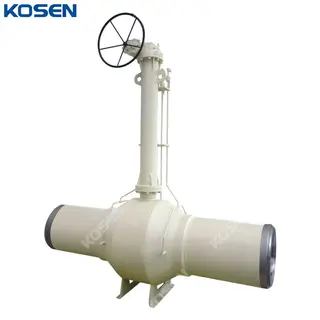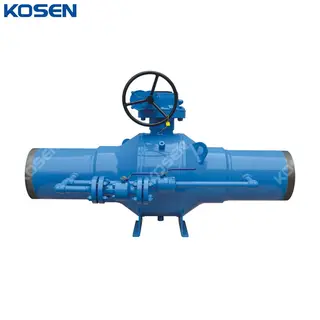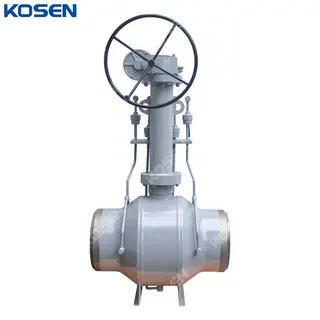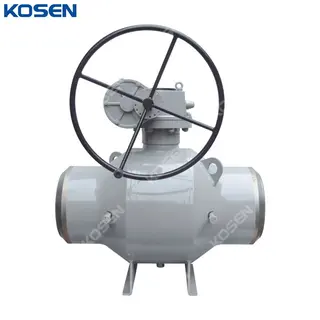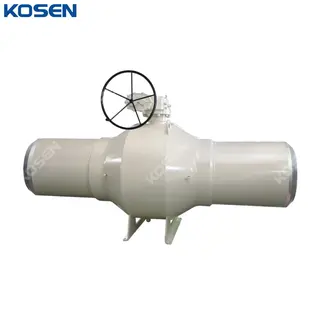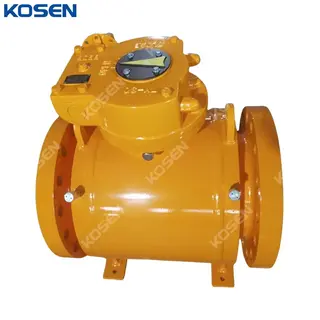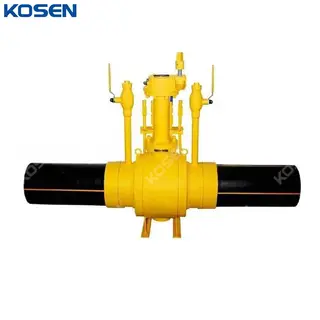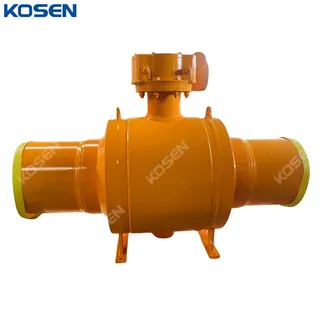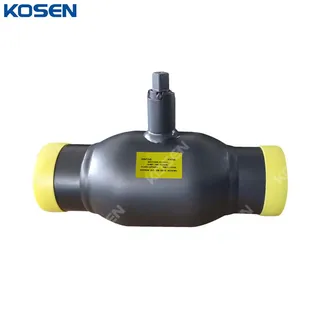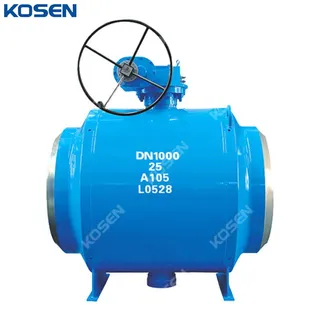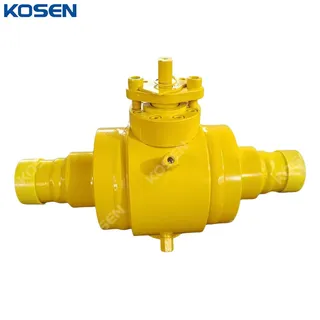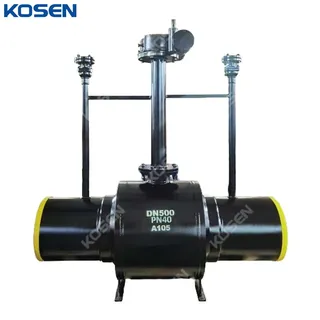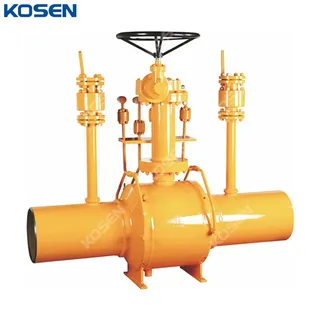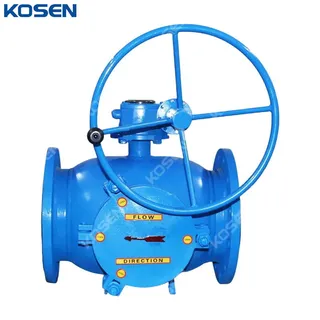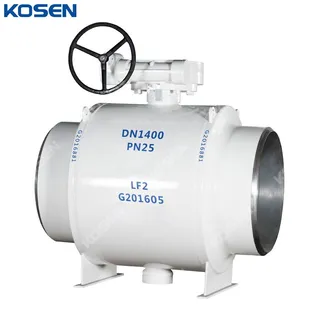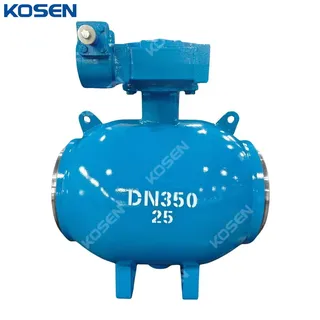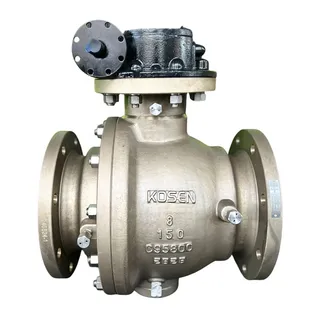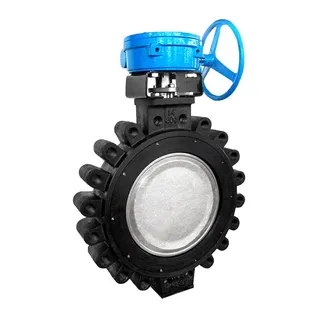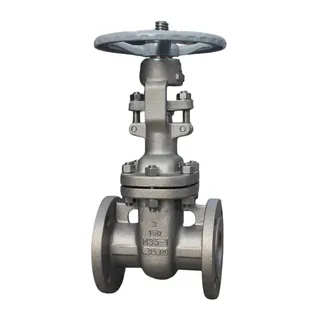The fully welded ball valve has various unique structural features that make it suitable for widespread use in industrial pipeline systems. Below are the main design characteristics and advantages.
1. Valve Body Structure and Connection Type
The valve body is forged from high-quality materials to ensure strength and durability. The side-mounted design of the ball, along with the full welded connection between the middle flange and neck, significantly reduces leakage points, enhancing sealing and stability. The welded connection to the pipeline not only improves sealing performance but also increases the valve's pressure resistance, making it suitable for high-pressure and special conditions pipeline systems.
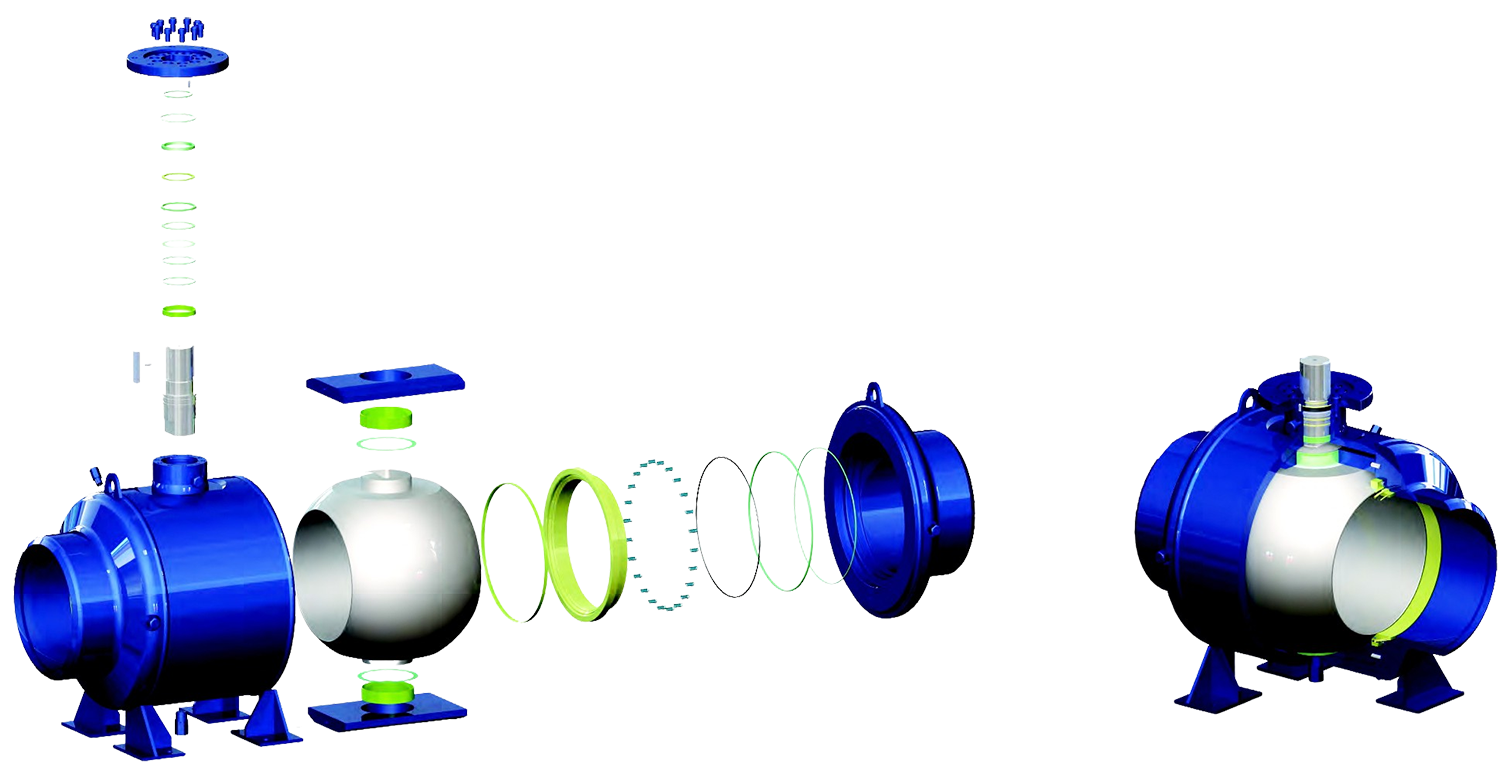
The seat design incorporates the piston effect, providing three combined piston effect functions:
DBB Function: Both upstream and downstream are single-piston effect seats, offering the advantage of bi-directional sealing.
DIB-1 Function: Both upstream and downstream are double-piston effect seats, offering higher sealing safety.
DIB-2 Function: The upstream has a single-piston effect, while the downstream has a double-piston effect seat, ensuring broader application scenarios.
These designs cater to different pressure and flow requirements, providing precise and reliable sealing performance.
The sealing design between the seat and ball provides two options:
Traditional Soft Sealing Structure: Suitable for common sealing needs.
Triangle Ring Sealing Structure: Ideal for higher pressure and special conditions, further improving sealing effectiveness.
Additionally, the valve stem is designed to prevent blowout, which ensures safety during operation.
The fully welded ball valve is equipped with fire and static electricity protection devices, ensuring safety during operation in special environments. Moreover, the seat and stem seals are designed with emergency grease injection ports. If sealing surfaces are damaged or leakage occurs, operators can inject sealing grease for emergency repairs. Each grease injection port is equipped with a grease valve and an embedded check valve, ensuring the repair process remains uninterrupted and enhancing the valve's reliability.
To ensure long-term operation, the valve body is fitted with a drain valve at the lowest point for valve chamber drainage and venting. Additionally, a vent valve is located at the top of the valve body for online venting and cleaning. These drainage and venting valves can use isolation valves or dedicated discharge connectors to ensure safe and convenient operation.
The fully welded ball valve can be compatible with various drive devices, including handles, worm gears, electric, pneumatic, gas-liquid linkage, and electro-hydraulic linkage, offering flexible control options based on actual needs. For welded connection valves, the material of the valve end (transition section) can be adjusted according to the pipeline material grade, ensuring the valve's adaptability and weldability under different pipeline conditions.
For buried installation, the valve stem can be lengthened according to engineering requirements, allowing for surface operation. At the same time, grease injection, drainage, and venting devices can be extended to the surface via pipelines, ensuring convenient daily maintenance and emergency handling.
